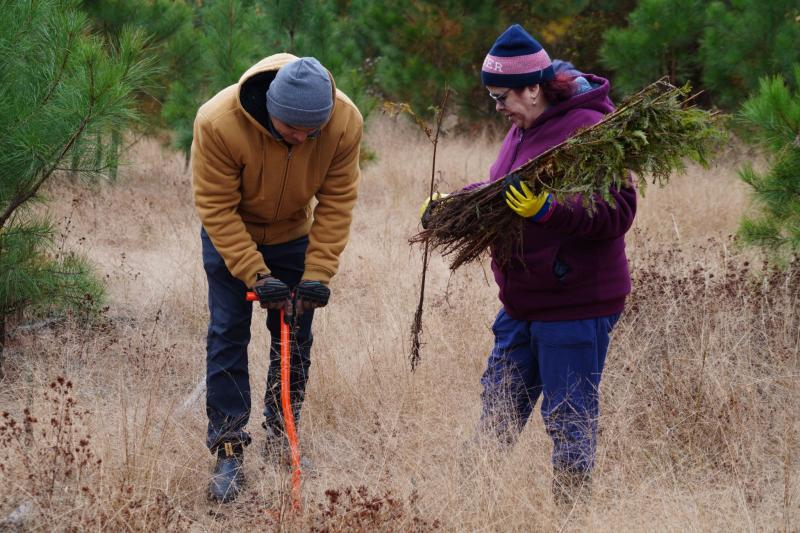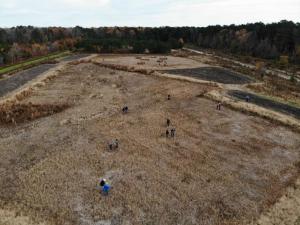Volunteers plant 1,000 trees in Great Cypress Swamp
Thanks to a cooperative effort between Delaware Wild Lands and the Delaware Center for the Inland Bays, a large-scale reforestation project is taking root in southern Sussex County near the Maryland border.
The 80-acre long field project site sits within Delaware Wild Lands’ 10,600-acre Great Cypress Swamp. Once an isolated, low-yield agricultural field, the long field needed both wetlands and forest restoration to improve water quality and wildlife habitat.
Delaware Wild Lands first completed the wetlands restoration with other project partners and then teamed with the CIB to plant trees throughout the site.
Reforestation efforts were kicked off Nov. 14. A total of 44 volunteers joined Delaware Wild Lands and CIB staff to show their appreciation for Delaware's natural resources by planting 1,000 bald cypress tree seedlings.
“I really enjoy getting together with kindred spirits to help repair our Earth’s land, air and water,” said volunteer Charlie Garlow. “We did all that by planting trees with the center and DWL. What fun!”
The restoration project includes planting 10,000 native trees and shrubs, such as Atlantic white cedar, bald cypress, mixed hardwoods and buttonbush. This effort will repair a fragmented block of coastal plain upland forest and expand the tree cover within Delaware's largest contiguous forest. It also will improve the overall health and function of the forest.
“The preservation and restoration of native forests, particularly near water, is one of the most cost-effective ways to remove nutrient pollution from surface and groundwater that enters the Inland Bays,” said Zach Garmoe, CIB science technician.
When complete and mature, the total reforestation effort is expected to stop about 588 pounds of nitrogen and 20 pounds of phosphorus pollution from reaching nearby waterways every year.
Among its many other benefits, the project will also create a diverse habitat for wildlife, including many species of resident and migratory birds. Furthermore, the trees will help combat climate change by capturing atmospheric carbon and providing flood mitigation benefits, increasing the resiliency of Delaware’s natural resources and the communities that depend on them.
“As the largest freshwater wetland and contiguous forest on the Delmarva Peninsula, DWL’s Great Cypress Swamp plays a critical role in protecting water quality, air quality, and wildlife habitat throughout the region. The important work completed by these volunteers will have an impact for now and years to come,” said Kate Hackett, Delaware Wild Lands executive director.
Funding for the reforestation project was provided by Delaware’s Nonpoint Source Pollution Program, the Arbor Day Foundation, the U.S. Fish & Wildlife Service and the State of Delaware’s new Tree for Every Delawarean Initiative.
To learn more, go to dewildlands.org and inlandbays.org.
























































